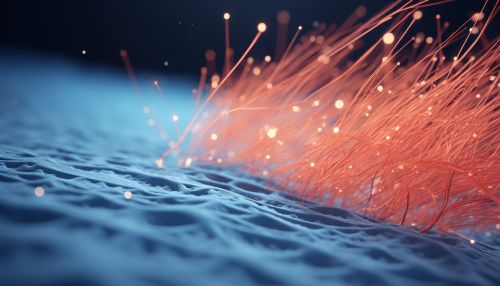Nanoplankton
Introduction
Nanoplankton are microscopic organisms that inhabit the pelagic zones of freshwater, brackish, and marine environments. They are typically less than 20 micrometers in diameter and include both phytoplankton (photosynthetic organisms) and zooplankton (non-photosynthetic organisms). Nanoplankton play a crucial role in the aquatic ecosystems, contributing significantly to primary production and forming the base of the aquatic food web.


Classification
Nanoplankton are classified into two main groups: nanophytoplankton and nanofauna. Nanophytoplankton are photosynthetic organisms that include various species of diatoms, dinoflagellates, and cyanobacteria. They are the primary producers in the aquatic food chain, converting sunlight into chemical energy through photosynthesis. Nanofauna, on the other hand, are heterotrophic organisms that feed on phytoplankton and other smaller organisms. They include small species of protozoa, rotifers, and other microscopic animals.
Ecological Role
Nanoplankton are vital components of the aquatic ecosystems. They contribute significantly to the primary production in oceans, seas, and freshwater bodies. Through photosynthesis, nanophytoplankton convert sunlight, carbon dioxide, and nutrients into organic matter, a process that also produces oxygen. This organic matter forms the base of the aquatic food web, providing food for larger plankton and other aquatic organisms.
Nanoplankton also play a key role in the biogeochemical cycling of nutrients. They absorb nutrients from the water, which are then transferred up the food chain when nanoplankton are consumed by larger organisms. When nanoplankton die, they sink to the bottom, taking the absorbed nutrients with them. This process, known as the biological pump, helps sequester carbon dioxide from the atmosphere, playing a role in climate regulation.
Distribution and Abundance
Nanoplankton are found in all types of aquatic environments, from freshwater to marine. Their distribution and abundance are influenced by various environmental factors, including light availability, temperature, nutrient concentrations, and predation pressure. Nanoplankton are most abundant in nutrient-rich waters, such as upwelling zones and estuaries.
In the open ocean, nanoplankton distribution is often stratified, with the highest concentrations found in the euphotic zone where light penetration is sufficient for photosynthesis. Below this zone, the abundance of nanoplankton decreases sharply due to limited light availability.
Research and Monitoring
Nanoplankton are often used as bioindicators to monitor the health of aquatic ecosystems. Changes in their abundance and community composition can indicate shifts in environmental conditions, such as nutrient availability, water temperature, and pollution levels. Various methods are used to study nanoplankton, including microscopy, flow cytometry, and molecular techniques like DNA sequencing.
Research on nanoplankton also contributes to our understanding of global carbon cycling and climate change. By studying the factors that influence nanoplankton growth and productivity, scientists can better predict how changes in climate and ocean conditions might impact primary production and carbon sequestration in the oceans.
